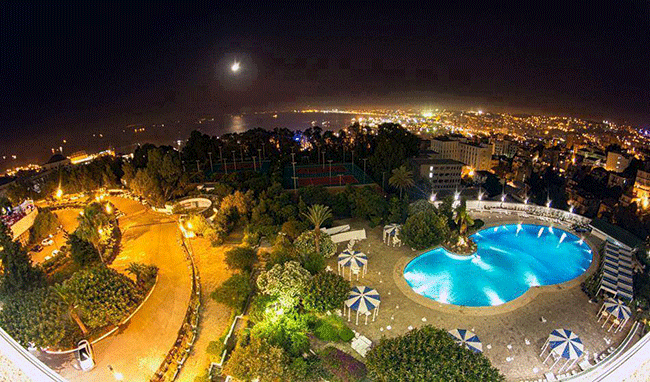Largest country in Africa
As the largest country in the Africa Continent and in the Mediterranean region, Algeria has vast areas of unspoiled territory.Ithas unique qualities, such as the best ancient Roman sites outside Europe, therapeutic hot springs, the Sahara desert, rock and mountain climbing opportunities, arts and crafts.
Tourists can either discover the approximately 1,200 km of spectacularMediterraneancoast, orexplore the magnificent Sahara desert and go the encounter ofits ancient and diversified traditions and cultures.
A geographer, who was also a poet, has compared the Algerian territory to an amphora of which the break dips into the Mediterranean sea and the legs lays on the sand.
Weather and climate zones
Algeria is very often described as the country of the four seasons. It has three different climates:
- Mediterranean climate on the coastal zone, with variations from West to East. The average annual temperature reaches 18 from April to October. In July and August, the summer averages are situated above 30°. From October to May, the climate is temper and humid.
- The semi arid climate in the region of the High Plateaux, characterized by a long and cold season which sometimes is humid from October to May where we can record temperatures around 0°, negative at times in some regions. The rest of the year prevails a hot and a dry season with temperatures above 30°.
- The arid climate spreads to the regions of the Big South. The cities and oasis of these regions go through long periods of heat from May to September, where the temperature reaches sometimes 45° to 50° maximum. The remaining months of the year, the climate is very soft with however night temperatures nearing 0° and negative sometimes.
A proposed tourist trip
Visiting the cities of Algeria is comparable to the reading of a history book, punctuated by antique, islamic, ottoman and Mediterreneansites. Algiers, Annaba, Bejaia, Cherchell,Constantine, Ghardaia, Oran, Timimoun, Telemcen, and many other cities offer visitors unexpected resources of discovery. Outside the cities, archeological treasures are everywhere witnessing the country’s central place in the Mediterranean History and civilization.
The great south is a majestic and mystical place, ideal for meditation and for silence-lovers. It requires however real physical qualities and some care making it an essential human experience involving eating frugally and sleeping in the open air. In the Tassili and the Hoggar, in the heart of the Sahara, lies the biggest open-air museum in the world with thousands of engravings and rock paintings tracing back the sources of humanity. The limpidity of the air during the winter in these regions enables a very good visibility to admire the panoramas and the landscapes, and most of all, its breathtaking sun set, the most beautiful in the world.

Infrastructure and development prospects
The country is well equipped with regard to general infrastructure, as it has 131airports, of which 53 are international, a railway network of 14,500 km serviced by more than 2,200 stations, 73 harbours and a network of roughly 190,000 kilometers.
The prospect for the development of tourism and the promotion of Algeria as an important tourist destination are very promising. In 2008, the government launched a strategy referred to as "Horizon 2025" targeting particularly the creation of a world class accommodation and other tourism-related infrastructure.

